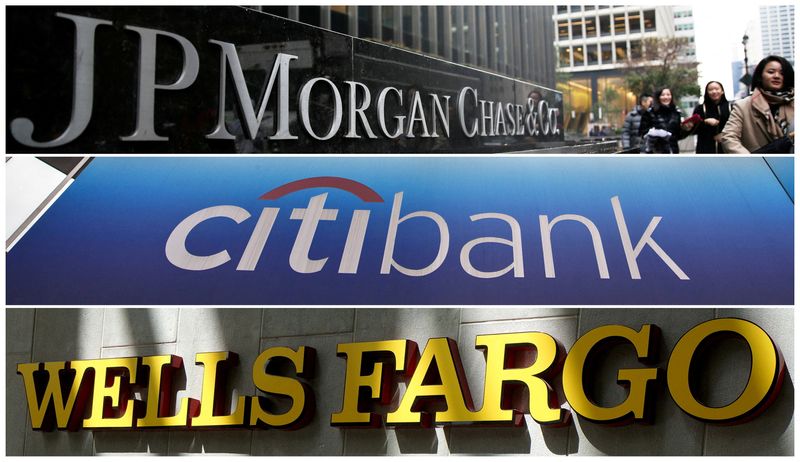By Manya Saini
(Reuters) -U.S. bank stocks fell and a key regional index hit a near two-week low on Thursday amid lingering worries about the health of the lenders in the aftermath of the crisis in regional banks and ahead of second-quarter results that start next week.
The KBW Regional Banking Index, which hit its lowest since June 23, was last down 2%, adding to its year-to-date loss of 25.1%. The S&P 500 Banks Index slipped 2%.
"Net interest margin pressure is likely to be greater than most expect as the 'honeymoon' period of the tightening cycle, in which assets reprice higher while liabilities repricing lags, has come to an end," said analysts at brokerage Raymond James.
The banking sector's biggest crisis since 2008 had shaken investor trust as small lenders found themselves on the wrong side of the U.S. Federal Reserve's rate-hike cycle.
"The bright spots are few and far between from a fundamental perspective for most banks in the current interest-rate environment," Raymond James analysts said.
Regional lender PacWest Bancorp dropped 6% after KBW analysts cut their price target on the stock, citing the loss on the recently announced loan sales and a more conservative net interest income outlook.
Comerica (NYSE:CMA), KeyCorp (NYSE:KEY), U.S. Bancorp also fell between 2.3% and 2.9%.
Bank stocks over the last month had regained some ground after bearing the brunt of investor anxieties since March.
Last week, shares rose after the Fed's annual health checks showed lenders could weather an economic slump.
Among individual movers, big banks JPMorgan Chase (NYSE:JPM), Wells Fargo (NYSE:WFC), Goldman Sachs Group (NYSE:GS), Morgan Stanley (NYSE:MS), Citigroup (NYSE:C), and Bank of America (NYSE:BAC) dropped between 1.5% and 3.1%.

"Despite recent deposit stability, borrowings have remained fairly elevated throughout 2Q23 and only recently begun to moderate," said analysts at KBW, adding that as the banking industry continues to distance itself from the stress in March and April, the brokerage expects borrowing levels to move lower.
Banks are due to kick-off the second-quarter reporting season late next week, with all eyes on updates around deposit stability and macroeconomic headwinds.